Solitaires Team
Spider Solitaire is a beloved card game with global popularity. As with classic Solitaire, this engaging game demands strategic thinking and patience. Your aim is to organize cards into descending sequences from king to ace. This guide will navigate you through the process of playing Spider Solitaire.
Typically, online Spider Solitaire has 3 levels of difficulty depending on the number of suits used in the game: 1 suit is the easiest level, 2 suits is medium, and the most difficult is Spider Solitaire 4 suits.
Spider Solitaire 1 Suit is a simplified version of the classic Spider Solitaire game, designed for beginners or those seeking a less complex challenge. It is played with only one suit, making it easier to form the required sequences from the king to the ace. The goal is to clear the tableau by organizing the cards into descending order, but the single suit reduces the difficulty and improves the chances of winning.
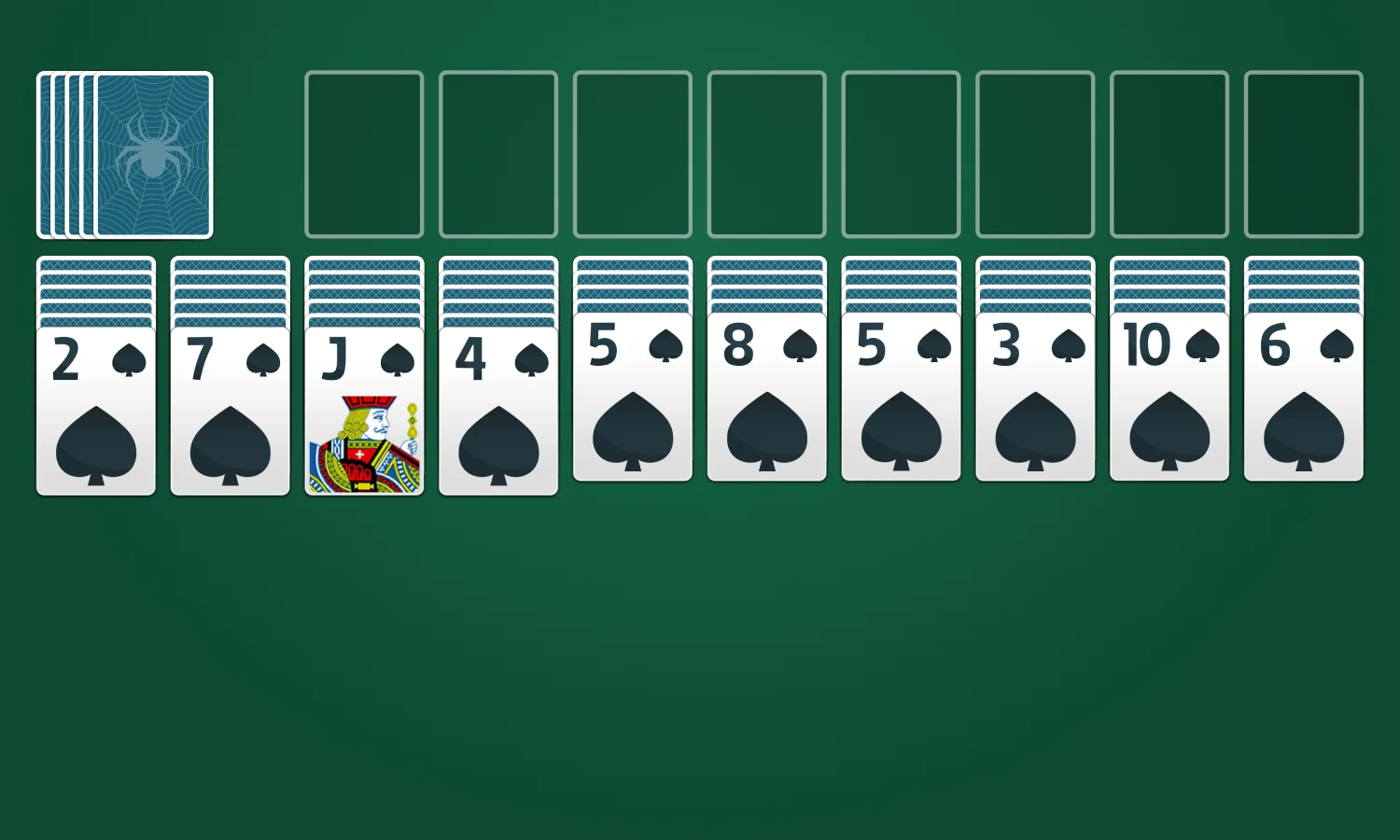
Spider Solitaire 2 Suits is an intermediate version of Spider Solitaire in which the difficulty is increased by using two suits instead of one. This variant balances the simplicity of the 1-suit version with the complexity of the 4-suit one.
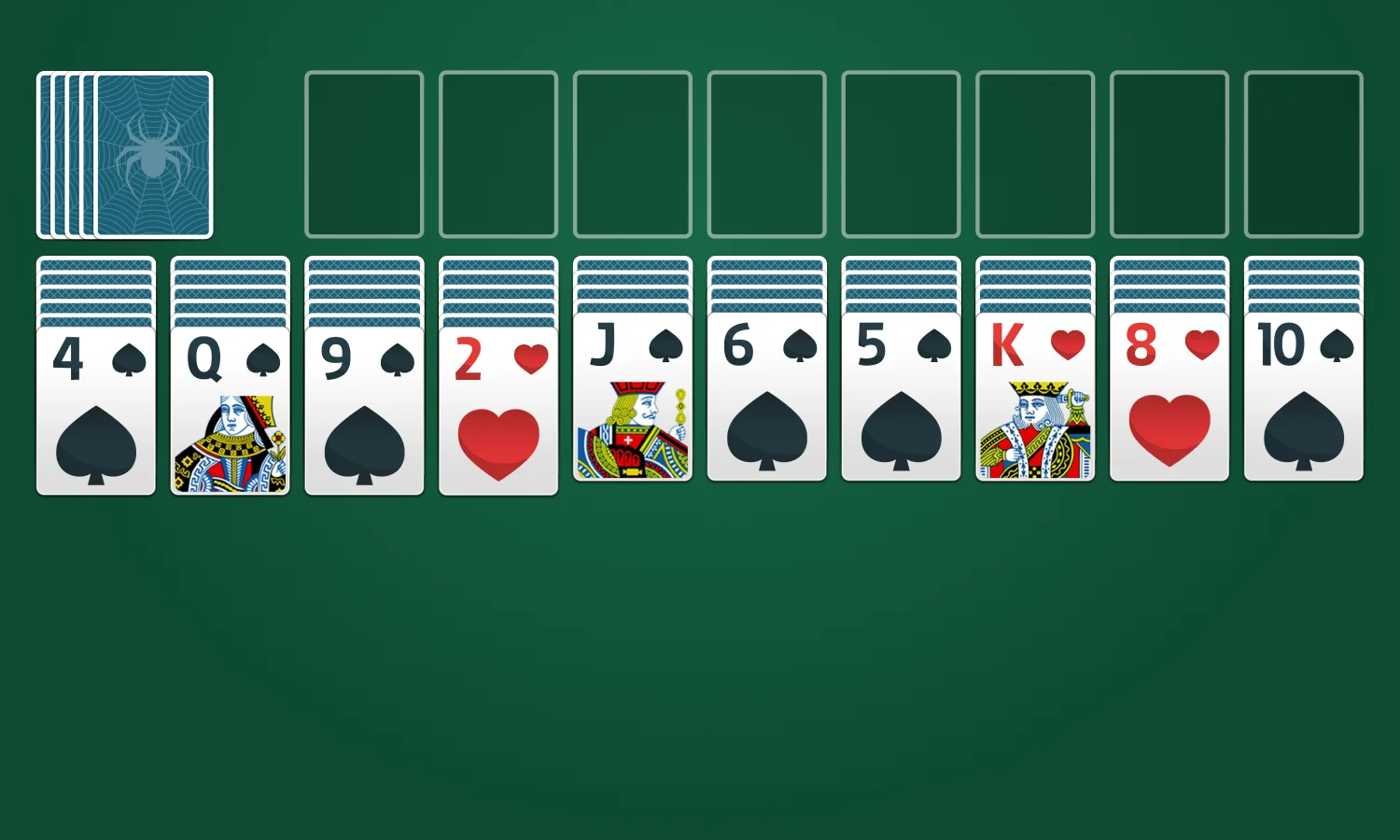
Spider Solitaire 4 Suits is the most challenging version of the game, played with all four suits. This variant demands a high level of strategy and skill. Players must navigate the increased complexity of managing four different suits while trying to form descending sequences from the king to the ace.
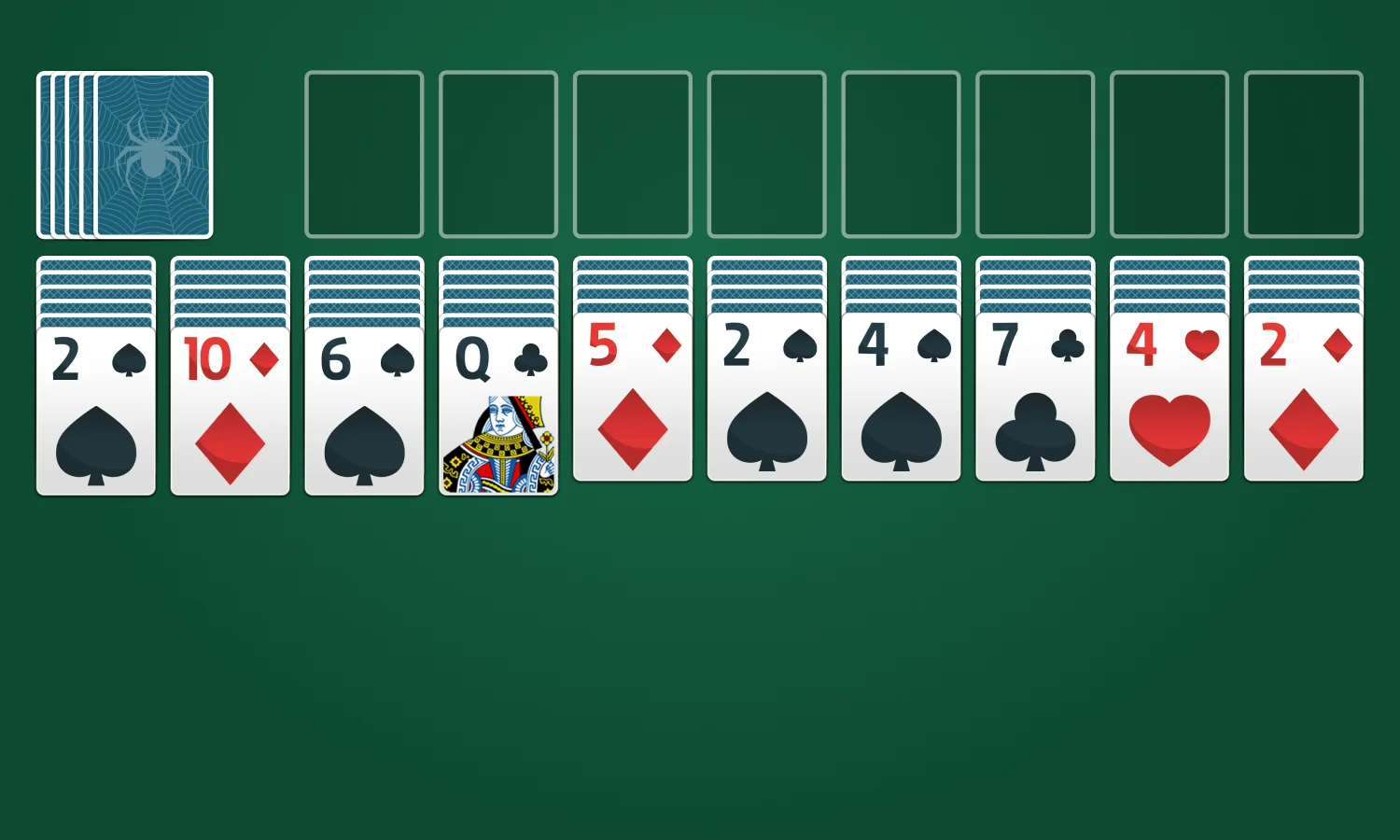
Spider Solitaire is played with 104 cards, which includes all the cards from two decks, except for the jokers. The goal is to form eight foundation stacks, each comprising a full suit of cards arranged in descending order, from king down to ace. Here are the main areas of the game:
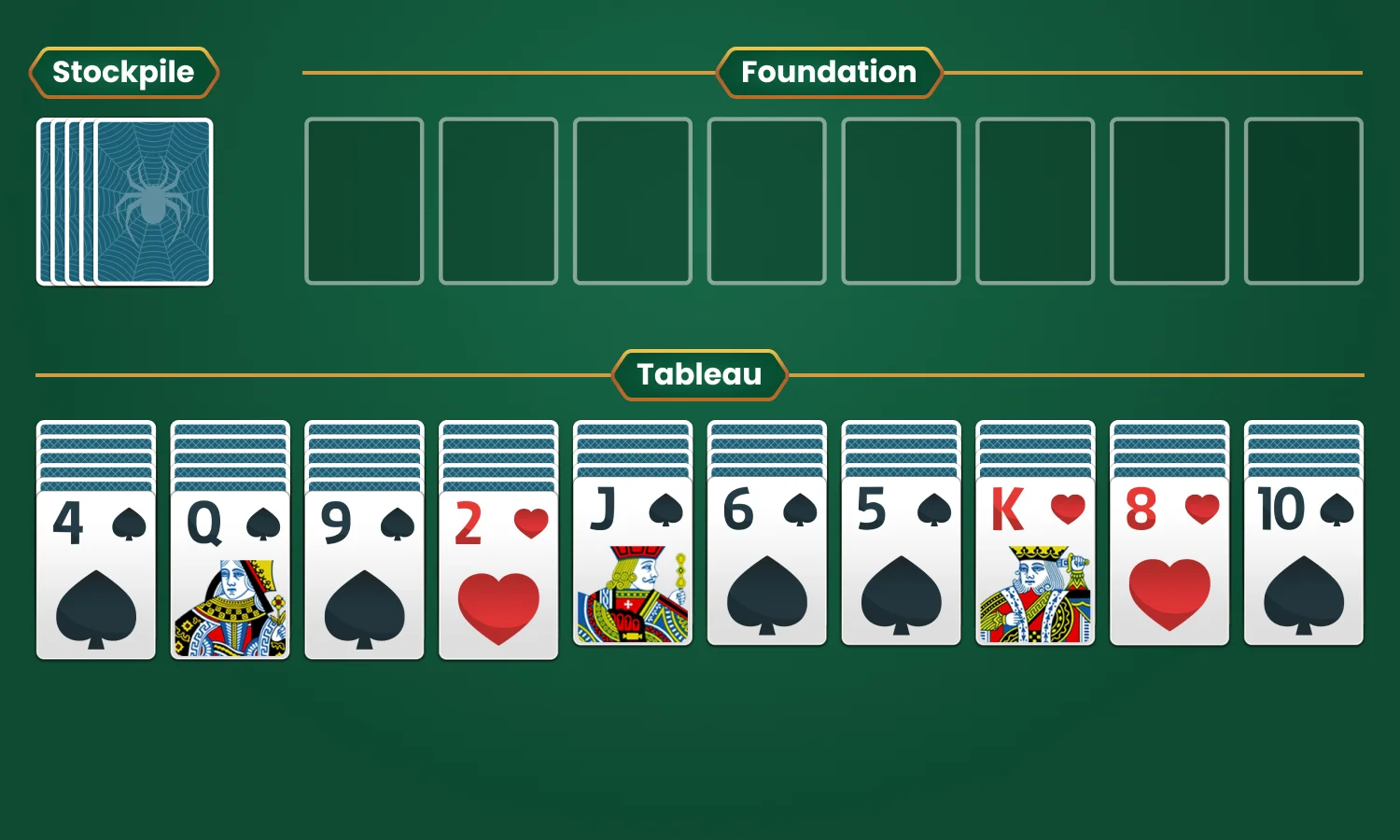
Your objective is to assemble 8 sequences, each containing thirteen cards arranged in descending order from the king to the ace of the same suit. When a sequence is fully formed, it is then cleared from the tableau.
Here's what one fully assembled sequence of cards should look like:

Understanding the basic rules and winning strategic approaches makes every game of Spider Solitaire both challenging and rewarding. Here are the fundamentals that will help you understand how to play Spider Solitaire.
You can move a single face-up card from one tableau column to another if it has a value one less than the card it is being placed on. The card being moved can be of a different suit but must be one step lower in value. For example, you can move the 5 of hearts onto the 6 of spades, or move the ten of clubs onto the jack of diamonds.
You can simultaneously move several cards if they form a descending sequence. However, unlike moving a single card, all the cards in the sequence and the card onto which it is moved must be of the same suit.
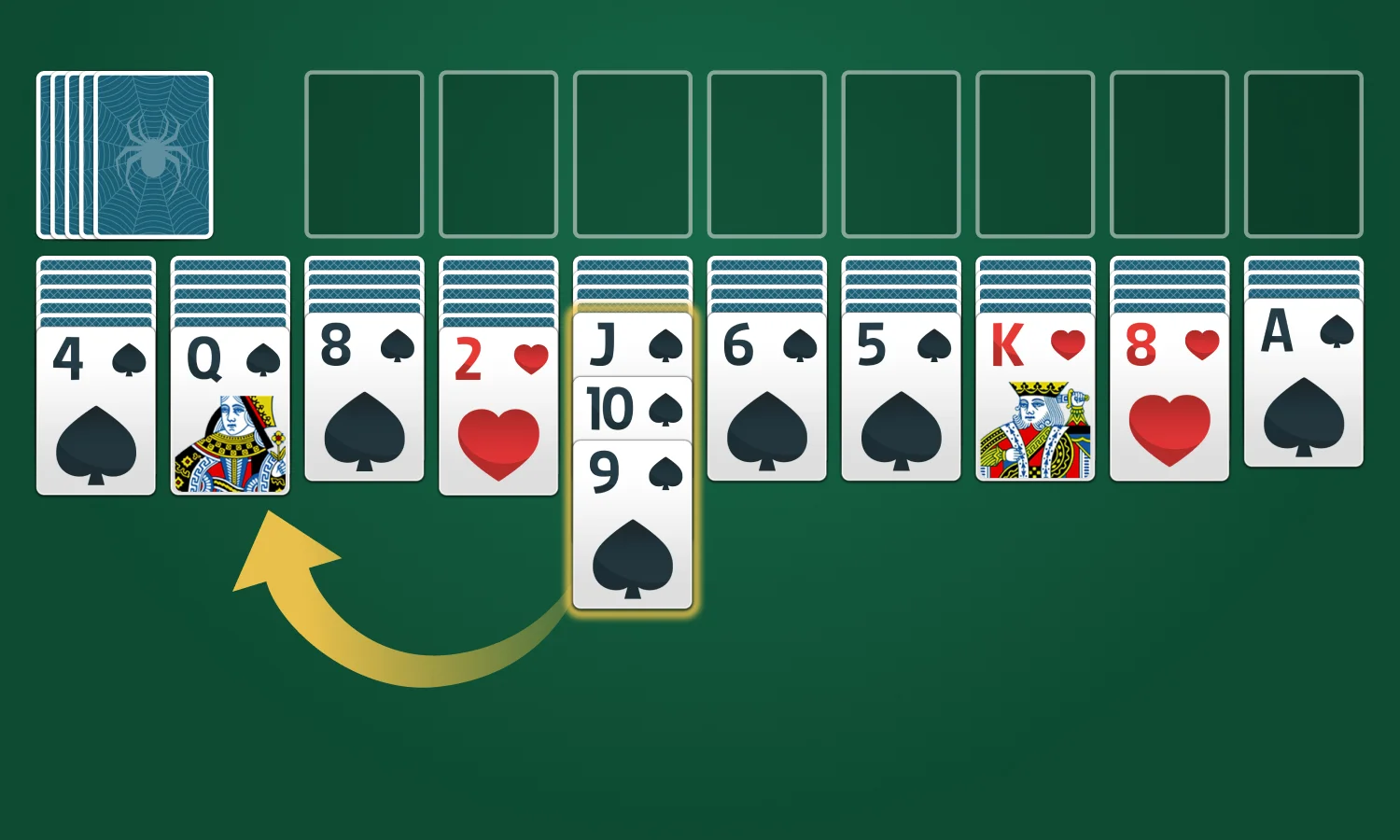
Assemble descending sequences from king to ace, all within the same suit. In the single-suit version, this rule is straightforward since all cards are the same suit.
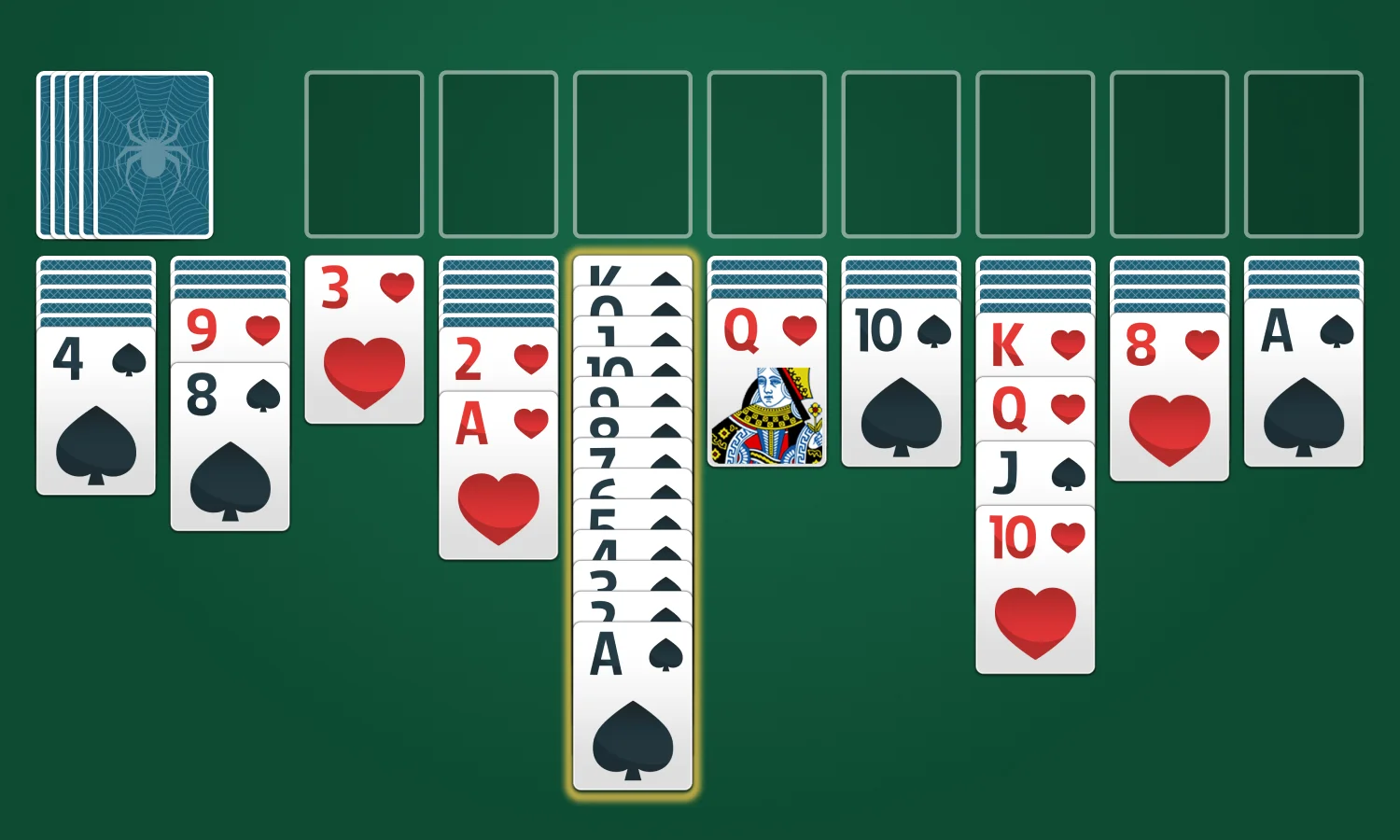
Once you clear one of the 10 columns of cards on the tableau, you can place any single card or same-suit sequence into that empty column. Try to use this space to place cards or sequences that block possible further moves on the tableau. It is also a good strategy to place a king, or a sequence starting with a king, into an empty column. The king is the highest-ranked card and can't be moved onto any other card, so it blocks any possible moves on the tableau.
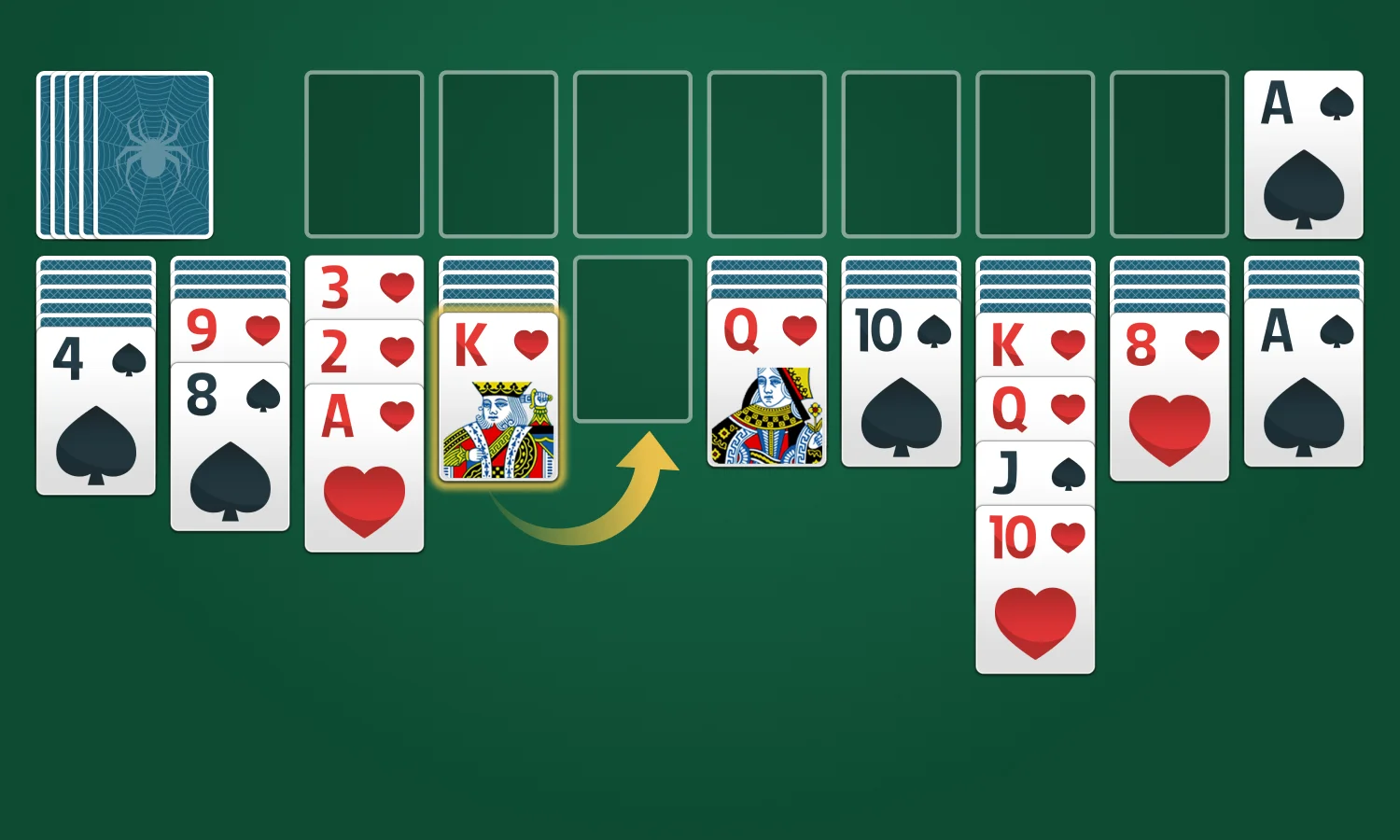
You can draw ten new cards from the stockpile, placing one on top of each tableau column. However, you can only draw stockpile cards if there is at least 1 card in each of the 10 tableau columns. You cannot draw from the stockpile if you have an empty column so you must first place a card in the empty column before choosing to draw from the stockpile. Try to use the stockpile only when you no longer see possible movements within the tableau.
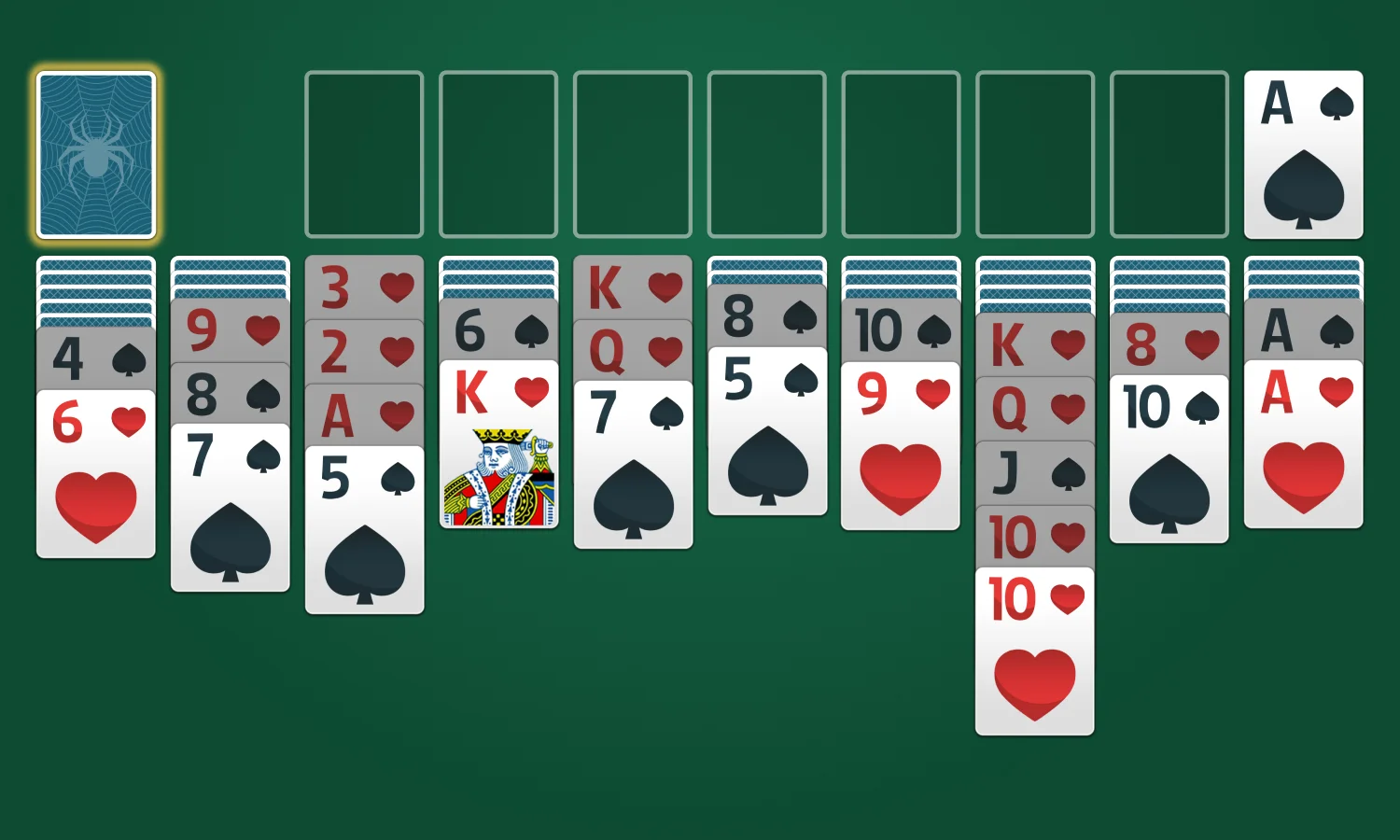
This is a basic overview, and playing a few rounds can help grasp the flow and strategy of the game better. Try one of the Spider Solitaire versions now!
Below are some tactics to enhance your chances of success in Spider Solitaire:
Always try to create empty spaces in the tableau piles by moving cards to other tableau piles. This approach increases your possibilities for rearranging cards.
Aim to maintain a minimal number of cards in each tableau pile, facilitating easier card movement.
Sometimes a move that seems good at the time can lead to a dead end. Employ the undo option to revert and explore an alternative strategy.
When playing Spider Solitaire, especially as beginners, players will encounter some common errors. Here are a few to avoid:
With this array of game options on Solitaires.com you can keep your card-playing experience exciting and diverse. Each game presents its own set of challenges and entertainment, allowing you to enjoy Spider Solitaire in various ways. So, why not start playing now?